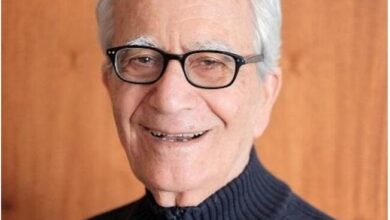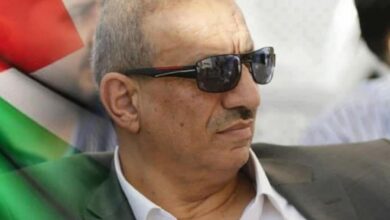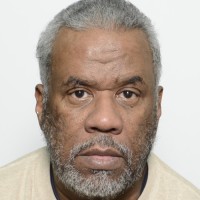The Moroccan Sahara and Arab National Security – Part One Dr. Salem Sirrieh, Academic and Writer (Palestine)
Dr. Salem Sirrieh, Academic and Writer (Palestine)

The Moroccan Sahara and Arab National Security – Part One
Dr. Salem Sirrieh, Academic and Writer (Palestine)
First of all, it must be said that it is the Moroccan Sahara being an extension of the land of Marrakesh (later called the current Morocco) As for naming it Western Sahara, the Sahrawi Arab Democratic Republic, the Sahara, the Spanish Sahara, Saguia El Hamra and Oued Eddahab (1), these labels do not indicate a geographical place and do not carry the identity of a people They are labels launched by the Spaniards, as most Arab countries have Western Sohar (2), where Spain isolated Western Sahara for its historical extension in Morocco to fragment Morocco and imposeto fragment foreign control over it (3). Under this name, Algerian academic studies have dealt with this thorny issue in line with Algerian politics as well as Mauritanian and Spanish studies (especially those published in Arabic, which were often addressed based on distorted Western information on the subject).
The importance of addressing the issue of the Moroccan Sahara stems from the fact that it is the bleeding wound and thorn that has bloodied the Arab Maghreb countries (Morocco, Algeria, Mauritania, and the Polisario – the Popular Front for the Liberation of Saguia el-Hamra and Río de Oro – for 46 years, since 1975 until now). After the Spanish colonization left it in 1975, after eighty years of occupation, following the valiant resistance of its people, despite Polisario not taking power, came to an end. Instead, after it began, Spain divided it between Morocco and Mauritania in the so-called Madrid Agreement. To ensure Morocco’s silence on Ceuta and Melilla, Spain obtained 80% of the territory. Spain obtained the remaining 20% after it recovered the part taken by Mauritania, which had fought a bitter armed conflict with the Polisario.The Polisario fought an armed conflict that lasted for 16 years against Morocco to recover the remaining part and continued its diplomatic efforts through the United Nations and the International Court of Justice, but without making any progress so far.Libya is the one who founded the Polisario Front and supported it with money and weapons (and was adopted by Algeria). The Sahara issue stood as a serious obstacle to the activation of the Arab Maghreb Union, which began in 1989 (Mauritania, Morocco, Algeria, Tunisia, and Libya).
Before we explain the nature of the Polisario and the views of Morocco, Algeria, and the United Nations on this issue, let us refer to the location of the Sahara and its geographical characteristics.
First: Location: The Moroccan Sahara is located in the northwest of the continent of Africa, bordered by Morocco from the north, Algeria from the northeast, Mauritania from the east and south, and the Atlantic Ocean from the west, bordered by a coast of 1400 km, and the Sahara consists of two areas, Sakia El Hamra in the north and Oued Eddahab in the south, and its area was estimated at 284 thousand km2.
This area is equivalent to half of Morocco’s current area (453,730 km2) without the Sahara.Morocco controls 80% of it, the Polisario controls 20%, while aiming to establish a state in its own right. Meanwhile, Morocco demands its full return to the motherland. (4)
Second: Its wealth: The reserves of phosphate in it are 106 million tons, and its purity rate reached 31%, which is not a small percentage that occurs naturally on the surface of the earth. One of the areas famous for the presence of phosphate is the area (Boucraa), which is 100 km from the city of Laayoune, which is the largest city in the desert, located on the Atlantic coast. In 1967, the Spanish company secured a concession for phosphate exploration. By 1977, Morocco had become the world’s third-largest producer of phosphate, surpassing its own production of 36 million tons. The proportion of iron reserves exceeds 800 million tons, with ores in the soil accounting for approximately 65%. There are iron mines in both Dhamila and Arasa, but in 1961, 23 wells were discovered. However, several Spanish and American companies have obtained concessions to search for and explore it.in 1969 oil appeared in large economic quantities in the marine area and north of the city of Laayoune and unanimous research and geological studies on the western desert on three sedimentary basins with structural specifications that allow them to be placed This shows the intensive return of oil companies in recent years to explore for it on the coasts of the region, an indication of the great petroleum potential of this region, and its coastline, which extends to 1400 km on the Atlantic Ocean, indicates the importance of fisheries in addition to its strategic importance. (5)
Population: There is no official census of the population, including both residents and displaced individuals, and the population is manipulated by all sides for political reasons. However, the population is generally estimated to be around one million. They are mostly Arab Muslims, consisting of seventeen tribes who speak the Hassaniya dialect, which is in fact closer to the classical Arabic language, in addition to the Arabs of Amazigh origin. There is also a minority that owes to Catholic Christianity. It is from this desert came the Arab conqueror Tariq bin Ziyad and from the Moroccan shore across the strait to overthrow the Kingdom of Zureik and establish on its ruins an Islamic system in the Iberian Peninsula (Spain), and from this desert also came the Almoravid commander Yusuf bin Tashfin to save the authority of Al-Mu’tamid bin Abbad and postpone the fall of Islamic rule in Andalusia for more than four centuries. Therefore, it is not surprising that the Spaniards viewed their southern borders (including the desert shores opposite the Canary Islands in the Atlantic Ocean) with constant security apprehension, reversed, from the first moment of the fall of Andalusia Western rule in the Iberian Peninsula, and work – according to the will of their queen Isabella – to maintain a foothold on the Arab shores to ward off any future danger. Franco-Spanish Morocco was divided into three countries (Mauritania, present-day Morocco, and the Sahara). (6)
Margins
1) Mustapha Khalfi – Moroccan Sahara -2019- download link-
https://www.noor-book.com/%D9%83%D8%AA%D8%A7%D8%A8-%D9%85…
2) Ali Al-Shami, Western Sahara, the complex of fragmentation in the Arab world, (Beirut 1980), p. 16.
3) Abdullah Hidaya, Si IssuesContemporary Assia, um Al-Qura Library, (Kuwait 1984), p. 155.
4) Jihad Odeh, The International and Regional Framework for the Western Sahara Problem, (Cairo, 1987), p 3
5) Jassim Shaalan – University of Babylon – Iraq – Western Sahara problem – 2011.
Iraqi Academic Scientific Journals – IASJ
Download link below:
Iraqi Academic Scientific Journals – IASJ Journal of the University of Babylon
2011, Volume 19, Issue 4, Pages 674-684
6) A deep study of several parts of Western Sahara
http://www.moqatel.com/…/Polesario/sec01.doc_cvt.htm
moqatel.com
www.moqatel.





